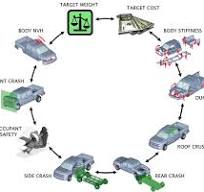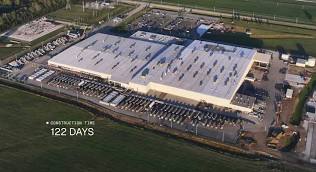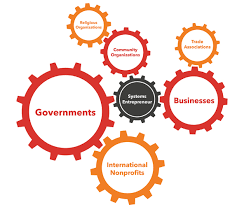The Advantages of Vehicle Integration in Modern Automobiles
As technology continues to advance at a rapid pace, the integration of various systems within vehicles has become a key focus for automakers. Vehicle integration refers to the seamless incorporation of different technologies and functionalities into a car’s design, creating a unified and efficient driving experience for users.
Enhanced Connectivity
One of the primary benefits of vehicle integration is enhanced connectivity. Modern cars are equipped with sophisticated infotainment systems that allow drivers to seamlessly connect their smartphones, access navigation services, and control various vehicle functions through a central interface. This level of connectivity not only enhances convenience but also improves safety by reducing distractions while driving.
Improved Safety Features
Vehicle integration also plays a crucial role in enhancing safety features within automobiles. Integrated systems such as collision detection, lane departure warnings, and adaptive cruise control work together to provide drivers with real-time information and assistance in avoiding potential accidents. By combining these safety features into a cohesive system, vehicle integration helps mitigate risks on the road.
Efficient Performance
Another advantage of vehicle integration is improved performance efficiency. Integrated systems can optimize engine performance, monitor fuel consumption, and adjust driving dynamics based on real-time data. This not only enhances the overall driving experience but also contributes to better fuel economy and reduced emissions.
Seamless User Experience
Vehicle integration aims to create a seamless user experience by consolidating various functions into an intuitive interface. Drivers can easily control climate settings, entertainment options, navigation services, and more without having to switch between multiple devices or interfaces. This streamlined approach simplifies the driving process and allows users to focus on the road ahead.
The Future of Vehicle Integration
As technology continues to evolve, the future of vehicle integration looks promising. Automakers are exploring new ways to integrate artificial intelligence, voice recognition systems, augmented reality displays, and autonomous driving capabilities into vehicles. These advancements aim to further enhance safety, connectivity, and overall driving experiences for consumers.
In conclusion, vehicle integration represents a significant advancement in modern automobile design. By seamlessly incorporating various technologies and functionalities into vehicles, automakers are able to provide drivers with enhanced connectivity, improved safety features, efficient performance, and a seamless user experience. As technology continues to progress, we can expect even more innovative integrations that will revolutionize the way we interact with our vehicles.
Understanding Vehicle Integration: Key FAQs Answered
- What is vehicle integration?
- What is EV integration?
- What does a vehicle integration engineer do?
- What is a vehicle integrated device?
What is vehicle integration?
Vehicle integration refers to the seamless incorporation of different technologies and functionalities into a vehicle’s design, creating a unified and efficient driving experience for users. It involves the integration of systems such as infotainment, safety features, performance optimization, and user interfaces to work together harmoniously within the vehicle. By combining these various components into a cohesive system, vehicle integration aims to enhance connectivity, improve safety features, optimize performance efficiency, and provide drivers with a seamless user experience. Overall, vehicle integration plays a crucial role in shaping the modern driving experience by leveraging technology to create smarter, more connected vehicles.
What is EV integration?
Electric Vehicle (EV) integration refers to the process of seamlessly incorporating electric vehicle technology into existing automotive systems. This involves integrating electric powertrains, batteries, and charging infrastructure into traditional vehicle designs to create hybrid or fully electric vehicles. EV integration aims to optimize the performance, efficiency, and sustainability of automobiles by transitioning from internal combustion engines to electric propulsion systems. By embracing EV integration, automakers can offer environmentally friendly transportation solutions that reduce emissions and dependence on fossil fuels while providing drivers with a more sustainable and energy-efficient driving experience.
What does a vehicle integration engineer do?
A vehicle integration engineer plays a crucial role in the automotive industry by overseeing the seamless incorporation of various technologies and systems into a vehicle’s design. These professionals are responsible for ensuring that all components, from infotainment systems to safety features, work harmoniously together to enhance the overall driving experience. Vehicle integration engineers collaborate with different teams, such as design, engineering, and manufacturing, to ensure that the final product meets performance standards, safety regulations, and user expectations. Their expertise lies in optimizing connectivity, functionality, and performance within a vehicle while focusing on creating a cohesive and efficient driving environment for users.
What is a vehicle integrated device?
A vehicle integrated device refers to a technology or system that is seamlessly incorporated into a vehicle’s design to enhance its functionality and connectivity. These devices are specifically designed to work in conjunction with the vehicle’s existing systems, such as infotainment displays, navigation services, or safety features. By integrating these devices directly into the vehicle, users can access a wide range of features and services without the need for additional external components. This integration not only streamlines the user experience but also contributes to improved safety, performance, and overall convenience while driving.



